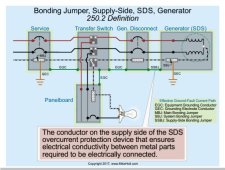MT off grid
New Member
- Joined
- Jan 23, 2022
- Messages
- 571
I have been trying to find if NEC has anything saying if you can or can't have two power sources that are not tied to eachother in the same house, my plan is to keep all of my non essential loads (220) tied to the grid through their own breaker panel and another breaker panel that has all essential loads (120) tied to my off grid system, the two panels would have no connection between the two that could cause me to accidentally feed the grid, if its possible I would like to add a manual transfer switch between the two panels just incase I run out of battery power but im not sure if that complicates my idea or not



